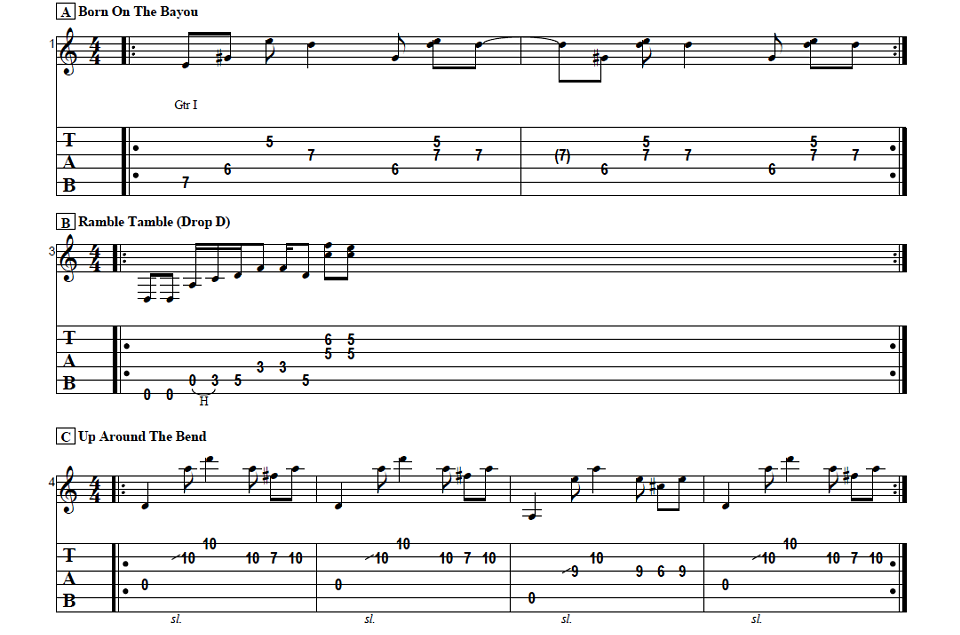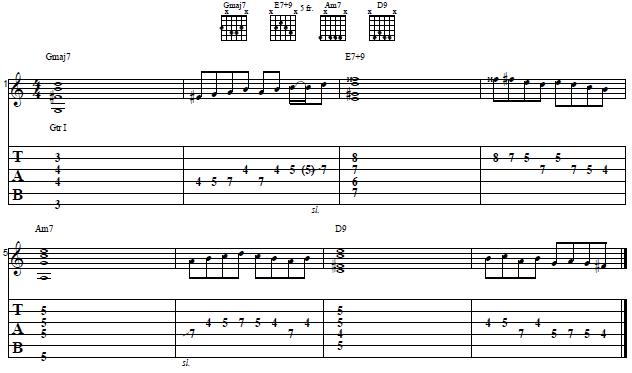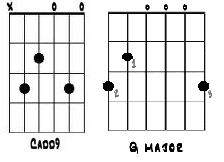Learn to play three fun and easy John Fogerty guitar riffs with Guitar Control instructor Darrin Goodman, aka Uncle D. Be sure to get the free tabs to go along with the video instruction and you will be rockin’ these classic guitar riffs tonight!

Introduction
How’s it going everybody? This is Darrin with GuitarControl.com bringing this video lesson and today I’ve got three fun and easy riffs for you in the style of John Fogerty.
So right now, Guitar Control is giving away this really awesome daily practice routine to improve your lead guitar chops. This was put together by our very own Silvio Gazquez, a two-time Guitar Idle finalist. This routine covers the four main concepts that are necessary for lead guitar; alternate picking, legato, sweep picking and tapping. All the tabs and exercises are all included in this free ebook and there’s a link in the description where you can get yours.
So be sure to click on the link in the description for the tabs and let’s get close up and take a look at these.
John Fogerty Riff-1 – Born On The Bayou
All right, so the first one to look at is the opening riff for Born on the Bayou. This is really easy. If you just take the C7 shape that you probably already know; if not it’s just it’s just a regular old C chord, but you’re going to take your pinky and put it so it’s on the third fret of the G string. So it’s on the same fret as your third finger is on so if we just take that shape and we move it up so now we’re on the seventh fret of the A string with my third finger, the sixth fret of the D string with my second finger, seventh fret of the G string with my pinky and then the fifth fret of the B string with my first finger. And it’s pretty easy, we’re gonna just pick it A, D, B, G… So that’s one and, two and, three and, and four. So the timing is not just a consistent three eighth notes and then a quarter note and then three eighth notes; so one and, two and, three, four and, so A, D, B, G, D and then the B and the G string together and then just the G string. So it’s not consistently like that. Sometimes I don’t think he was being really particular about how he did it. So if you just kind of… Now you could hybrid pick it, but I think that it sounds the most authentic to my ear when I play it anyway if I just use the pick…
John Fogerty Riff-2 – Ramble Tamble
All right, so the next one to look at is the riff for Ramble Tamble. Now this is in drop D so you’re going to need to tune your low E string down a whole step to D, but everything else stays the same. So we’re going to start off with the open low E string twice, remember it’s tuned down to D. So this is one and, and then starting on beat number two we’re going to play the A string open and then a hammer-on to the third fret and then to the fifth fret and that sixteenth note, so two e and uh. Now we’re going to go to the third fret on the D string with your first finger and this is an eighth note, so it’s kind of weird because it’s taking care of the last 16th note of beat two, plus the first sixteenth note of beat three so it it’s going to ring out longer… Then we’re gonna go to the fifth fret of the A string with your third finger and that is on the and of three and then for the downbeat of four we’re gonna go up here and how I’m doing is I use my second finger on the third fret of the G string and then my third finger on the sixth fret of the B string and that’s four and. And then on the and of four we just flatten the note on the sixth on the B string from the sixth fret to the fifth fret…
John Fogerty Riff-3 – Up Around The Bend
All right, then the last one to look at here is from Up Around The Bend. So I want to show you two ways that you can play this, the second part of it anyway. It’s four measures long and it just repeats and the first and second measure are the same and then the third and fourth measure the same; so technically it’s a two measure riff that’s just repeated. So we’re going to start off with the D string open and this is a quarter note, so it’s one and then we’re going to do a slide from nowhere to the tenth fret of the B string to the 10th fret of the high E and then back to ten… one, two and, three and, and the downbeat of four we’re gonna go to the seventh fret on the B string and then on the and of four back to the tenth fret. So that’s half of the riff right there… All right, so for the second half here I’ve got it tabbed out the way that I play it and I’m not sure how Fogerty actually does it. So I’m going to show you two ways to do it. I feel it this way is a little bit easier just because I don’t have to move around as much, but if you’re somewhat of a beginner the other the alternative way I’m going to show you might be possibly easier at first, but it has its own set of problems too. Okay so what basically what we’re going to do is we’re going to move the riff down a perfect fourth so now the open string will be the A string. Now what I’m doing is I’m going the A string open, it’s the same timing but I’m going to slide from nowhere to the ninth fret on the G string to the 10th fret of the B string, back to nine on G and then down to six and back up to nine… Now an alternative way you could do this is instead of doing it here, you could do it on the same strings how we did it originally with the open… But now we would move it down to the fifth fret so still we have to switch from the open D to the open A. Slide from nowhere to five on the B string to five on the high E, back to the B string down to the second fret and then back to five… Now doing it this way is easier because it’s the same shape, but now the frets are much further apart; you’re in this kind of awkward position. This way you have this transition where you have to go up a half step on the B string and stuff so that can make it a little tricky if you’re new, but really I would try to work on it both ways and then you will figure out which way is easier for you, which can help you with other things in the in the future. So the whole thing… So it does two measures based around D, one measure based around A and then back to one measure based around D and then the whole thing just repeats…
Conclusion
All right, so there you have it, three fun and easy riffs in the style of John Fogerty. So if you like this lesson be sure to give me a thumbs up and leave a comment down below if you have any questions about this or other guitar related topics. If you’ve not already done so please subscribe to the channel and hit that notification bell so you don’t miss any of the content we upload throughout the week. That is all I have for you today. Thanks for watching and have a great day.





